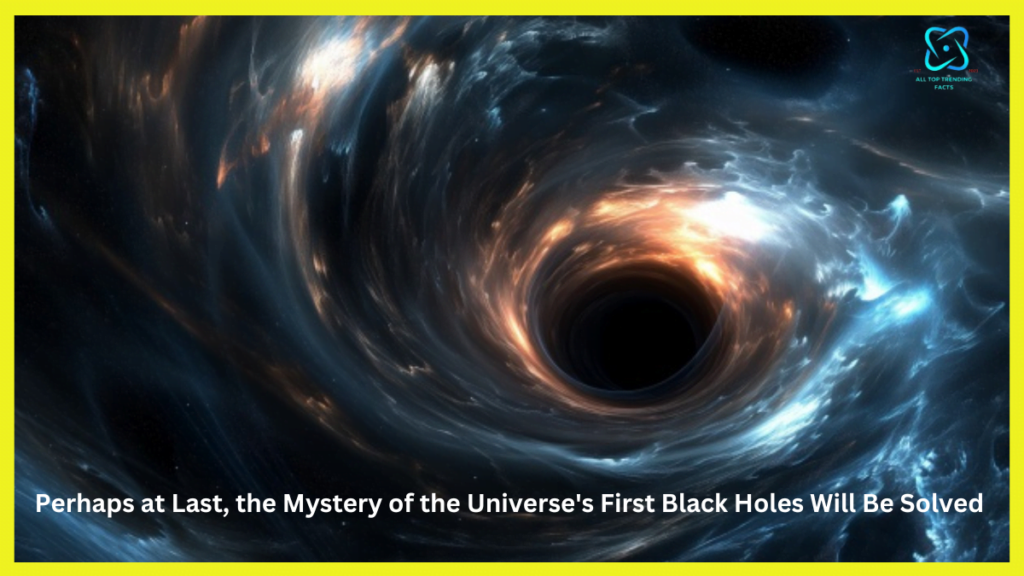Priyamvada Natarajan, an astronomer, made the prediction that black holes can originate independently of stars. Her theory is supported by new observations.

Astronomers have discovered a plethora of enormous black holes that appear to have developed far more quickly than previously thought feasible as they peer back into the early periods of the universe’s existence.
One may compare Priyamvada Natarajan to a cosmic biologist. She investigates the lives of these apex predators, black holes, which are so dense that they contain all matter and light.
As a PhD student in astronomy, Natarajan was one of the first to examine the broad taxonomy and evolutionary characteristics of black holes as though they were bats in a rain forest, treating them as populations rather than individual objects.
As an astrophysicist at Yale University, Natarajan is now concentrating on understanding how these creatures are born in addition to continuing to research their behavior.
Black holes often emerge in the aftermath of massive star explosions and gain mass via feeding on adjacent gas reservoirs.
You Can Check Out This Video For More Information
However, a few discoveries of supermassive black holes from the early universe imply that the story is not as simple as it seems.
A revolutionary new theory was put up by Natarajan and her colleagues in 2006 to explain how gas disks may collapse straight into unusually huge infant black holes without ever giving rise to stars.
The detection of a far-off, bright black hole by the James Webb Space Telescope (JWST) and the Chandra X-ray Observatory last year seems to finally confirm Natarajan’s prediction.
“There is unquestionably a compelling argument for these heavy black hole seeds,” astronomer Raffaella Schneider of Sapienza University of Rome states. “The idea that [Natarajan] put forth truly helped the community to broaden our view on the various possibilities that can occur.”
In an interview with Scientific American, Natarajan discussed how the most recent findings confirm her theory of “direct-collapse black holes” and what they mean for our understanding of these organisms’ evolutionary history.
[The interview transcript has been altered.]
Why did you get interested in the beginnings of black holes?
I’ve always had a fascination with the universe’s unseen beings. My work has mostly focused on attempting to comprehend these dark elements of the universe—dark matter, dark energy, and black holes—at a fundamental level.
These things are quite alluring and mysterious to me. They remind us of the boundaries of our understanding and the points at which the accepted rules of physics fail.
In the last several decades, black holes have evolved from being merely mathematical concepts to actual, observable things. As a result, they are now fundamental to our understanding of the formation of galaxies.
There are just many black holes in the cosmos, varying in size. Being a significant component of our cosmic inventory, their origin remains a fundamentally unanswered mystery.
What is unknown regarding the genesis of black holes?
Black holes usually form as a result of star death. A black hole is the tiny clump that remains after the most massive stars gravitationally collapse. That is the fairly well-established genesis tale.

However, around 20 years ago, as we began to use programs like the Sloan Digital Sky Survey to peer farther and further back into the cosmos, we discovered a small number of extremely enormous black holes—up to a billion times the mass of the sun—that were formed when the universe was only one or two billion years old.
There simply wasn’t enough time to develop the small seeds from the first stars bursting to these massive black holes, given the pace at which we know black holes prefer to feed.
In the next years, it became clear to us that the early cosmos included a large population of supermassive black holes rather than simply a few odd objects. And that’s when the puzzle started.
CLICK HERE FOR MORE TRENDING NEWS: SPORTS

“Hello Everyone” Myself Joydip DN, and I Live in Sylhet And I am a Seasoned Digital Marketer, Accomplished Content Writer, Experienced Blogger And Combines A Wealth of Experience In Online Marketing Trained From Freelancer Lab Academy, With A Strong Linguistic Proficiency, Evident In My Impressive IELTS Band Score. Holding An, MBA With A Major In Management Information System(MIS) From Leading University. I Am(Joydip) Seamlessly Integrates Strategic Business Insights With Technological Acumen To Deliver Organic And Impactful And Results-Driven Content In The Dynamic Digital Landscape. Contact with me: debnathjoydip4@gmail.com”






